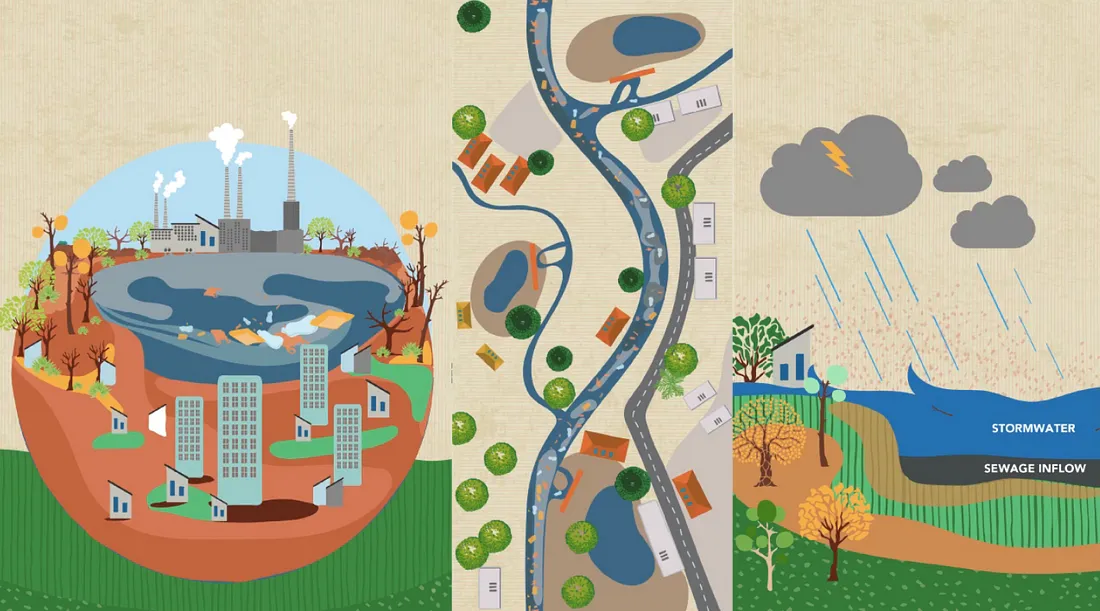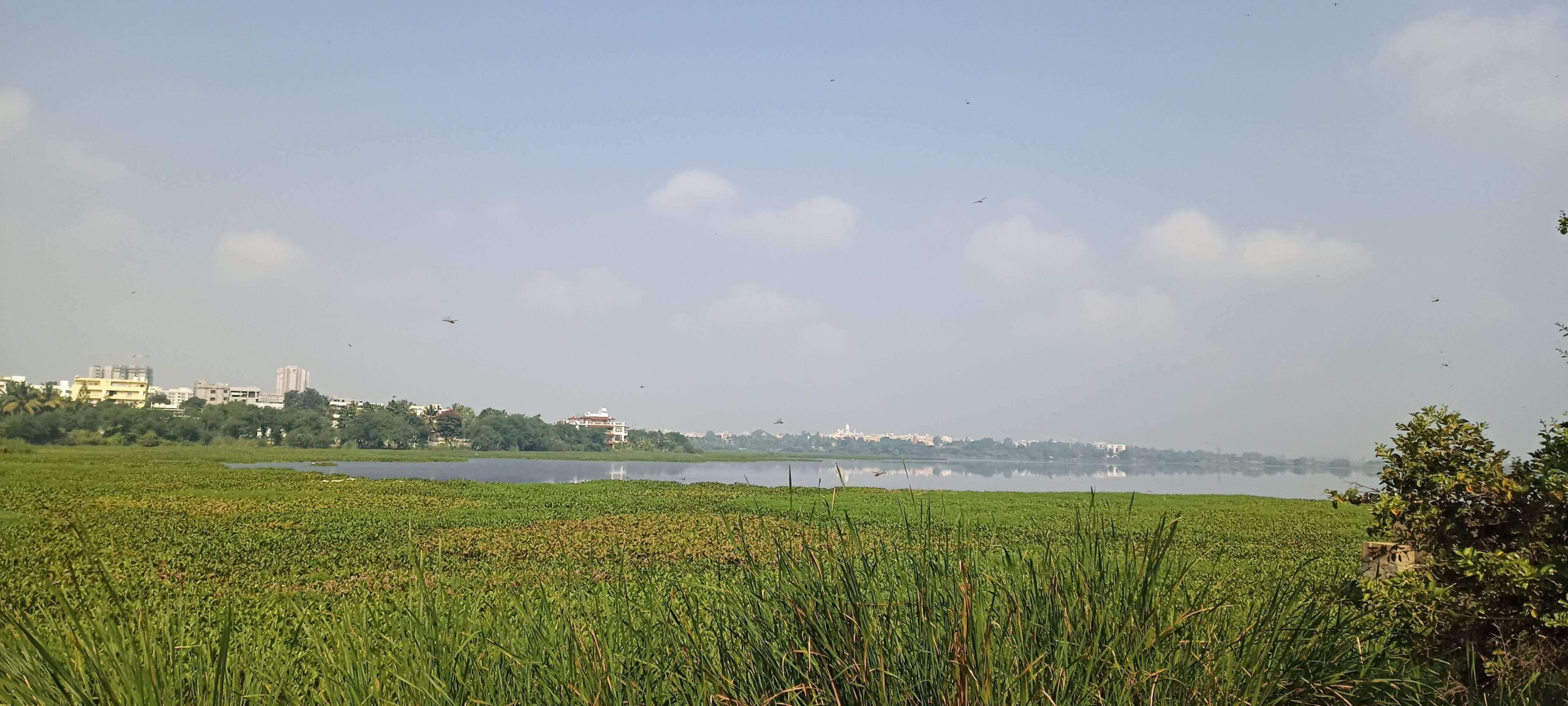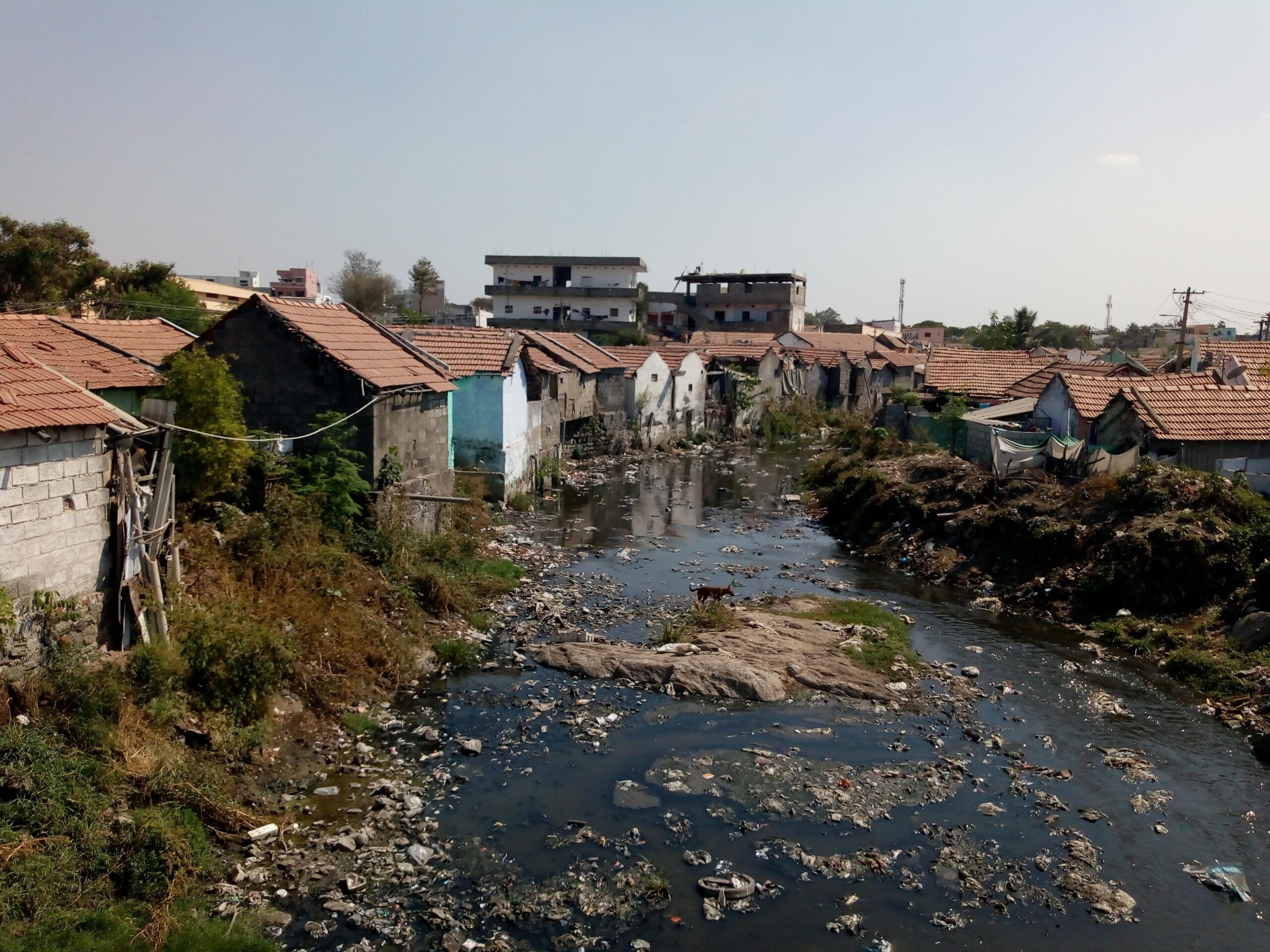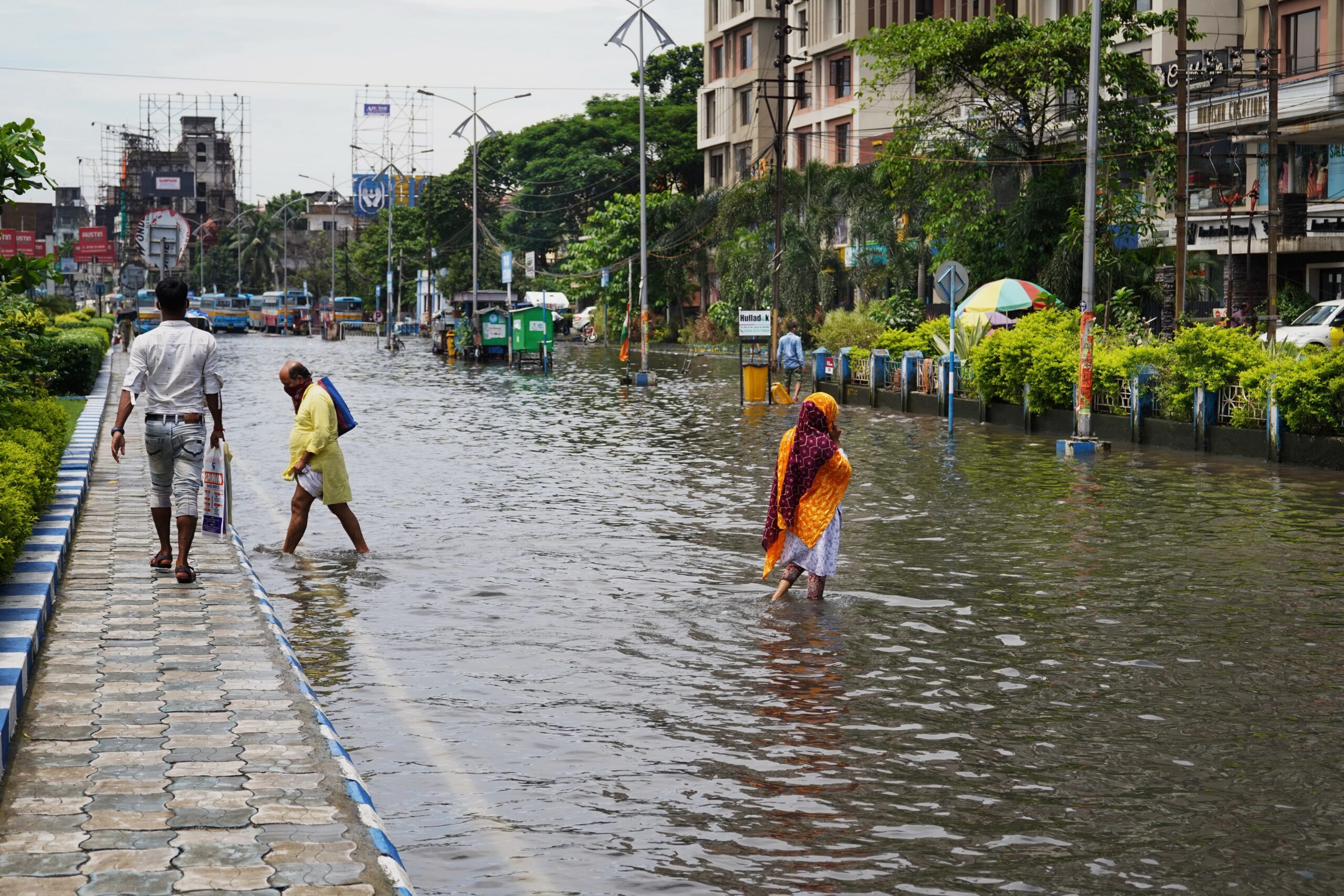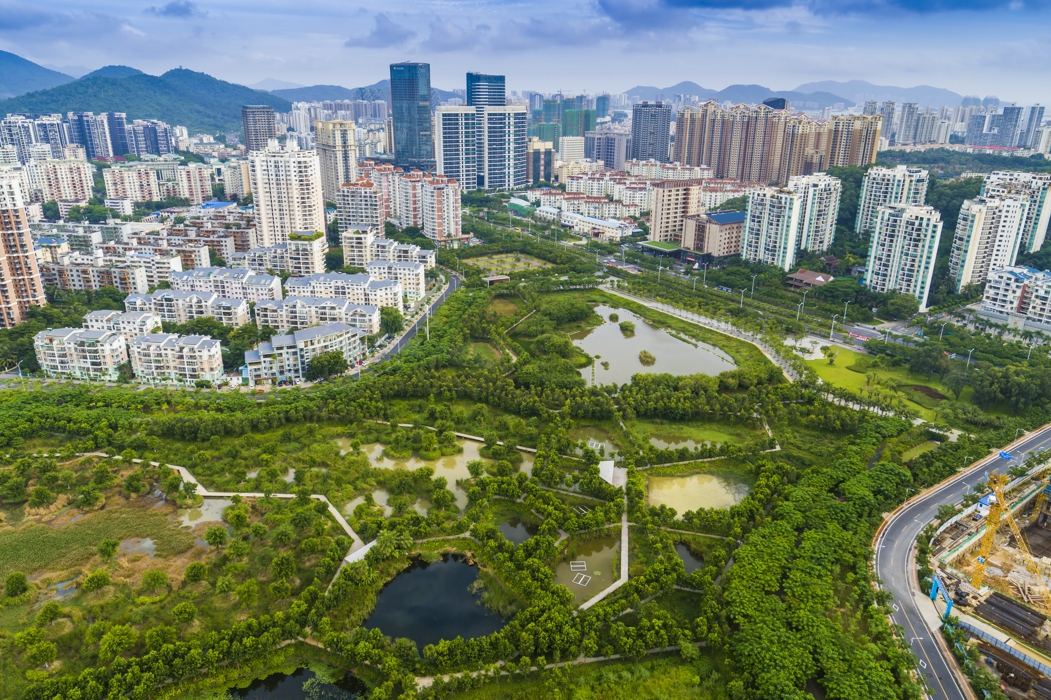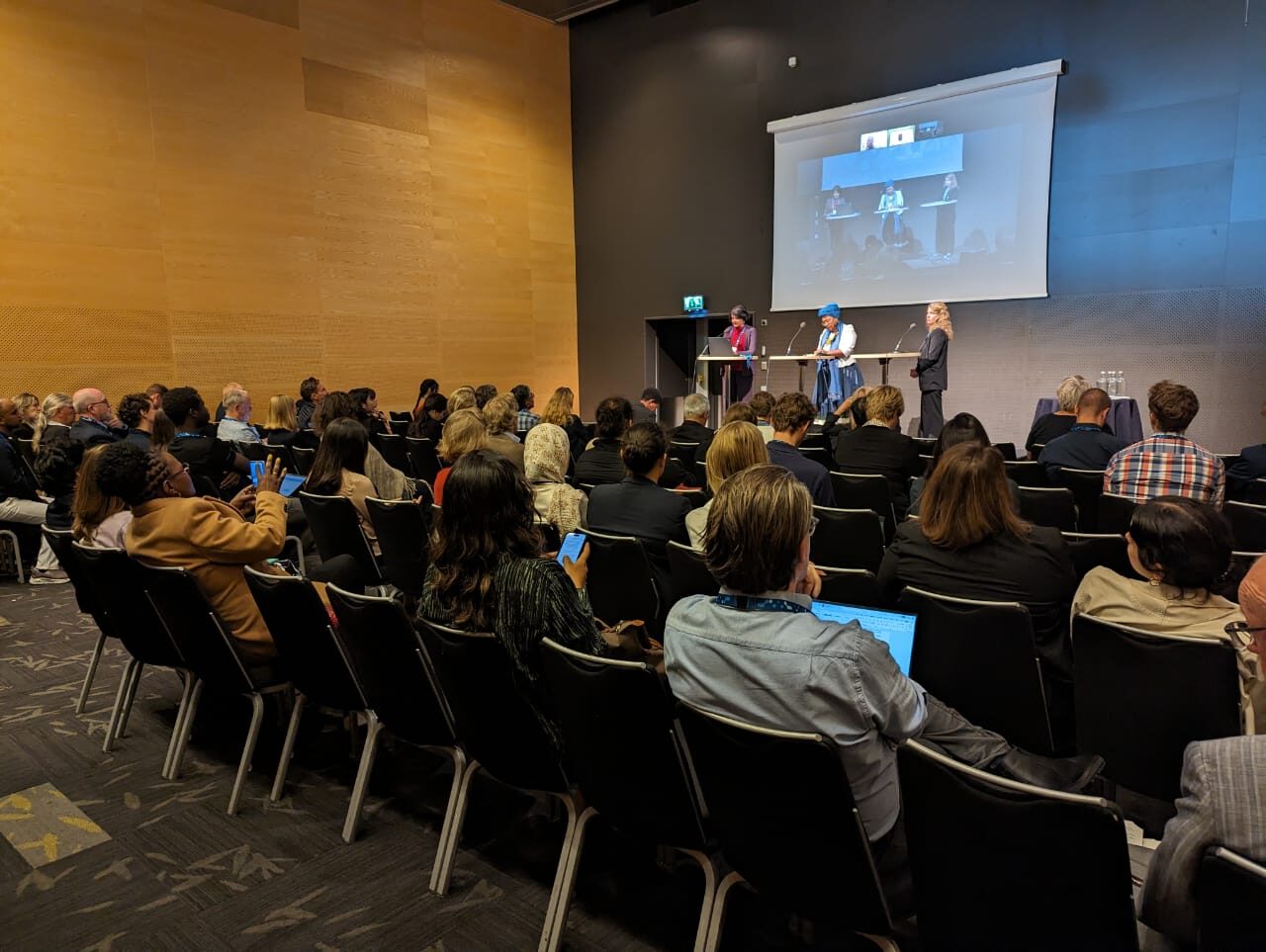Building Climate-Resilient Cities with Nature-Based Solutions
Credit: WOHA
This is the third part of a blog series on nature-based solutions for urban resilience. Read Part 1 and Part 2 here.
Mumbai recorded over 200 mm of rain within five hours on September 25, causing flooding and significant disruptions to the city. A few weeks before, Vadodara was submerged for nearly three days as the city received almost 239 mm of rain in 24 hours causing property damage, loss of lives and displacement of people. The trail of death and destruction seen this monsoon extends beyond Gujarat and Maharashtra, to the states of Uttar Pradesh, Himachal Pradesh, Kerala, Andhra Pradesh, Telangana, Delhi, Karnataka, Assam and much of the north-east. Before the onset of monsoon, the country witnessed severe heat waves, which also caused significant losses and suffering. In recent years, heat and water stress have both plagued much of India.
Occurrences of extreme events are increasing in frequency due to climate change, wreaking havoc in urban and peri-urban areas. Urban India, which is expected to host nearly half of the country’s population by 2035, will have to learn to adapt to changing conditions and recover swiftly from such shocks. This means that all stakeholders will have to prioritise integration of blue (lakes and wetlands) and green (parks and open spaces) infrastructure with the existing grey infrastructure.
Read | Soak Up the Rain: How a ‘Sponge City’ Makes Urban Areas Climate Resilient
Integrating grey infrastructure with blue and green infrastructure can mitigate the impact of extreme events when they are strategically located within a city’s land use grid.
Nature-based solutions (NbS), or green-blue-grey infrastructure (GBGI) as they are interchangeably called, has the potential to build climate-resilient cities, especially in the face of hydrological stresses. While NbS is not a silver bullet to the problems caused by poor planning and climate change, incorporating it in urban and peri-urban areas through vegetation- and water-based engineered structures can help with adaptation. The figure below lists different types of NbS that can be grouped into different layers — green, blue and grey.
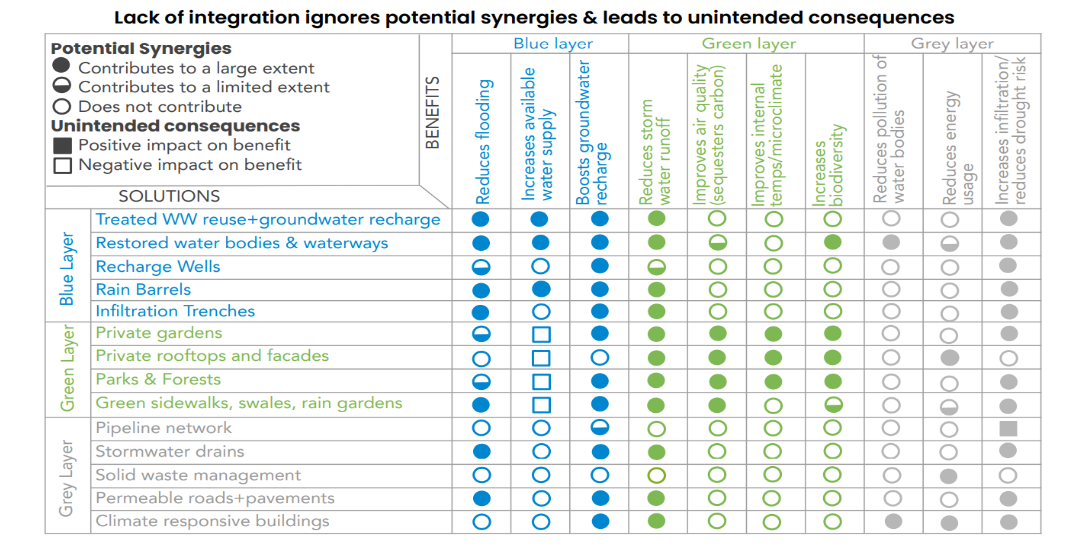
Fig. 1: Infrastructure that can be integrated into existing grey infrastructure along with the corresponding benefits. Source: Pathways for building climate resilient cities, CSEI-ATREE.
Fig. 2 illustrates how different NbS interventions can bring about a reduction in temperature of a microclimate. For example, incorporating and nurturing tree canopies in cities can mitigate urban heat stress by bringing about a change in the evapotranspiration levels, eventually influencing a city’s microclimate to make it feel cooler. Bioswales and bioretention basins can decrease stormwater run-off and increase groundwater recharge, thereby reducing the impact of urban floods and water scarcity.
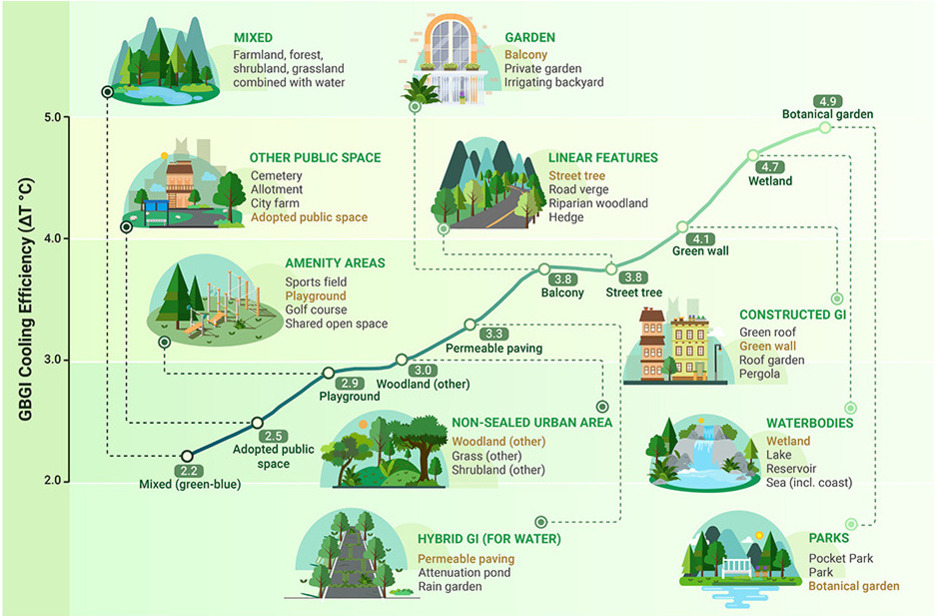
Fig. 2: Green infrastructure regulates heat through evaporation, shading transpiration and thermal insulation. Blue infrastructure absorbs heat and cools the surrounding area through evaporation. Source: Urban Heat Mitigation by Green and Blue Infrastructure by P Kumar et al.
Cities can design and implement NbS that maximise benefits for climate resilience, biodiversity, health, and sustainable development. Another area where NbS can be incorporated is in peri-urban areas that are rapidly developing. Currently, small and medium towns account for 44.2% of the overall urban area in India and constitute 26% of the nation’s total urban population. If these peri-urban areas incorporate NbS into their town master plans at an early stage, they can ensure sustainable growth at a large scale in the years to come. But this is easier said than done. The first step in the process to maximise the impact of NbS will be to establish the efficacy of NbS in the Indian context. For this, we need to document the benefits provided by NbS at different scales.
Read | A Visionary Architect and a New Growth Model: What’s Behind the Rise of Sponge Cities in China?
Establishing an economic case for NbS is crucial for several interconnected reasons, particularly in the context of scaling these solutions and integrating them into broader economic frameworks.
We, at WELL Labs, are working on NbS as part of our Urban Water programme and one of the approaches we are looking at is to scale NbS is the creation of an economic case for this low-impact development solution. This will help governments and private investors understand the costs and benefits of adopting green-blue-grey infrastructure. While Fig. 3 illustrates how the overall costs of NbS are lower than that of conventional grey infrastructure, there isn’t enough data in the Indian context, and this is a gap we aim to bridge. For instance, a conventional sewage treatment plant (grey infrastructure) has high maintenance costs in addition to the usual capital costs. Whereas, an NbS-based wastewater treatment system will have reduced annual maintenance costs.
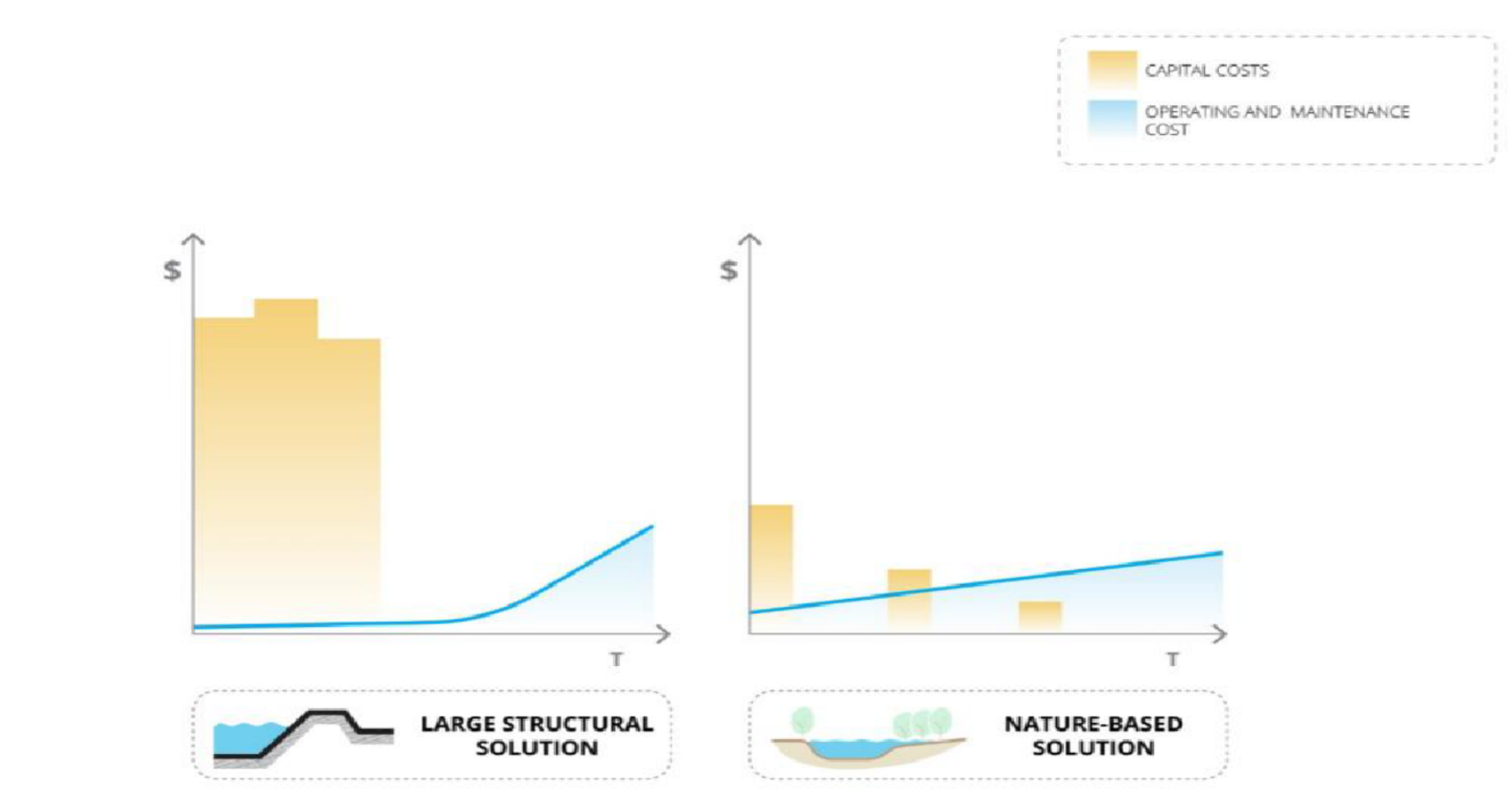
Fig. 3: Illustrative cost and benefit timelines for NbS and grey infrastructure solutions. Source: Assessing the Benefits and Costs of Nature-Based Solutions for Climate Resilience, World Bank
To get started on making an economic case for NbS, we created a cost-benefit analysis (CBA) framework for a project funded by Frank Water that aimed to identify the right set of NbS to be incorporated in Anekal, Karnataka. We first collated data from existing pilot projects across India to create a compendium of case studies whose data can be used to conduct a comprehensive CBA that will highlight the long-term financial and social gains of NbS.
To effectively identify and bridge the gaps in making an economic case for NbS, it is essential to understand the current landscape of NbS and the challenges that hinder its implementation.
While conducting the CBA, we noted some gaps and challenges like how most NbS projects in India are implemented at a very small scale, with no systematic documentation of costing or benefits. The absence of a comprehensive database of benefits of NbS in India made it very challenging to quantify benefits for pilot projects of different types. This leads to an absence of baseline scenarios for the measurement of benefits.
Another challenge is that benefits take time to accrue, which means that organisations or civic bodies investing in NbS need to factor in operation and maintenance costs. From an economic perspective, the lack of standardised cost per unit of NbS benefit poses a challenge in attracting investments, addressing societal challenges, facilitating policy support and ensuring long-term viability of NbS. Having access to unit cost per unit of benefit helps create a bespoke model from a costing perspective. There is also inadequate spatial data to feed into tools such as InVEST in the Indian context.
To bridge these gaps, WELL Labs is working on understanding how NbS should be designed to have maximum impact and what is needed to maintain it. As a first step, WELL Labs is quantifying hydrological and other benefits, both qualitative and quantitative. We are planning to collate evidence on select hydrological changes such as infiltration rate, groundwater recharge and stormwater retention through primary data collection.We are open to collaborating with organisations working on pilot projects to measure benefits.
Other than building an economic case for NbS, we are also working to map policy barriers that deter us from mainstreaming NbS in urban planning as part of a project with Oak Foundation. The project aims to increase collective action to integrate NbS with existing grey infrastructure to better tackle urban heat and water stress. It also looks at how NbS can provide mitigation benefits in addition to adaptation. For this, city officials, planners, implementation agencies, community members and other relevant stakeholders need to better understand these low-impact development solutions. This can help them effectively plan, design and implement interventions that promote resilience.
We are currently actively identifying and engaging with key stakeholders working on NbS. We are in conversation with InVEST, CEEW, WRI, NIUA and a host of other organisations to make sure we are not reinventing the wheel in any way. If you are interested in working with us on nature-based solutions, please get in touch with Radhika Sundaresan (radhika.sundaresan@ifmr.ac.in).
Authored by Radhika Sundaresan and Namitha Nayak
Edited by Ananya Revanna and Syed Saad Ahmed
Published by Anika Choudhary
If you would like to collaborate, write to us. We would love to hear from you.
Follow us and stay updated about our work:

